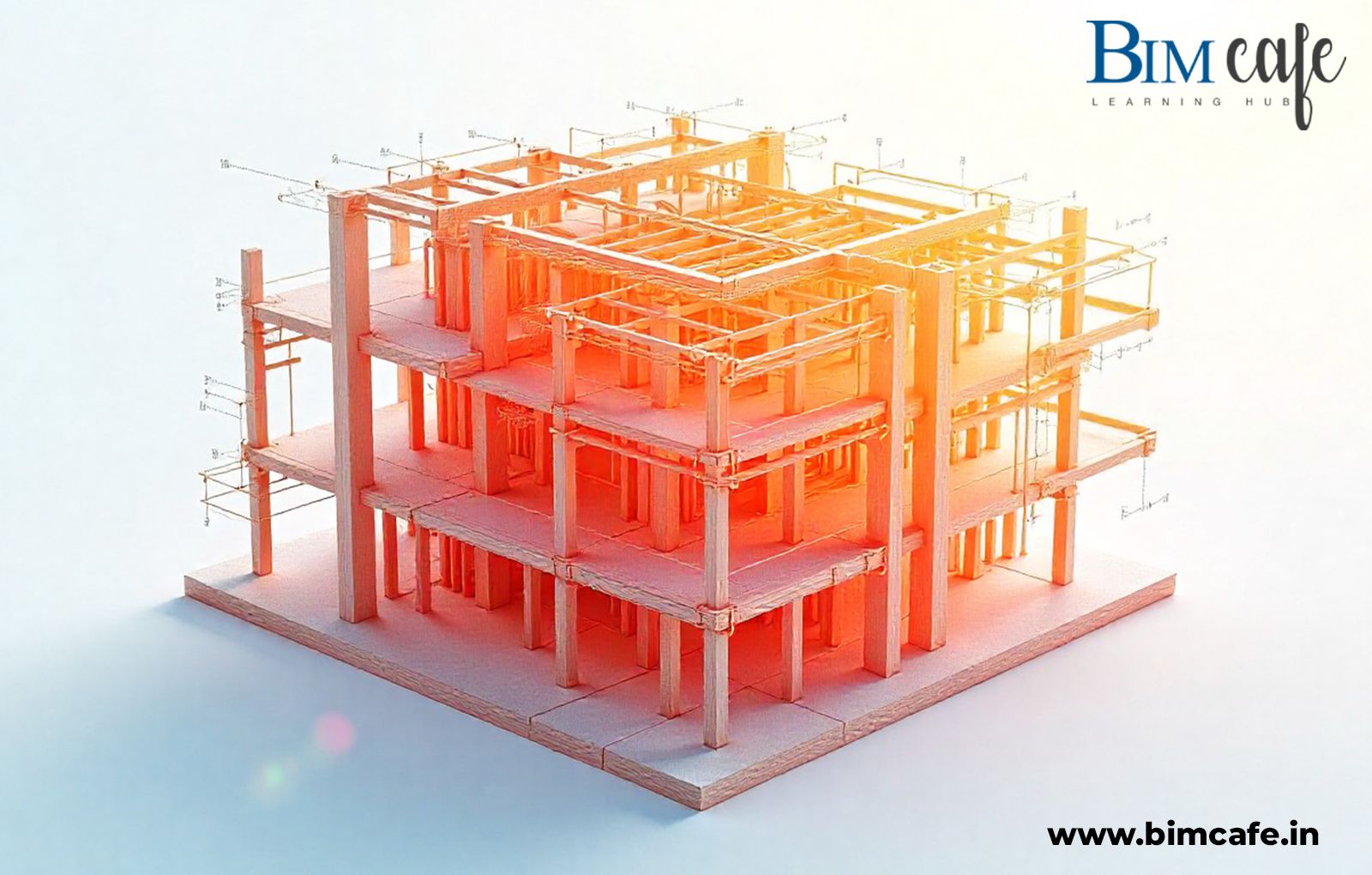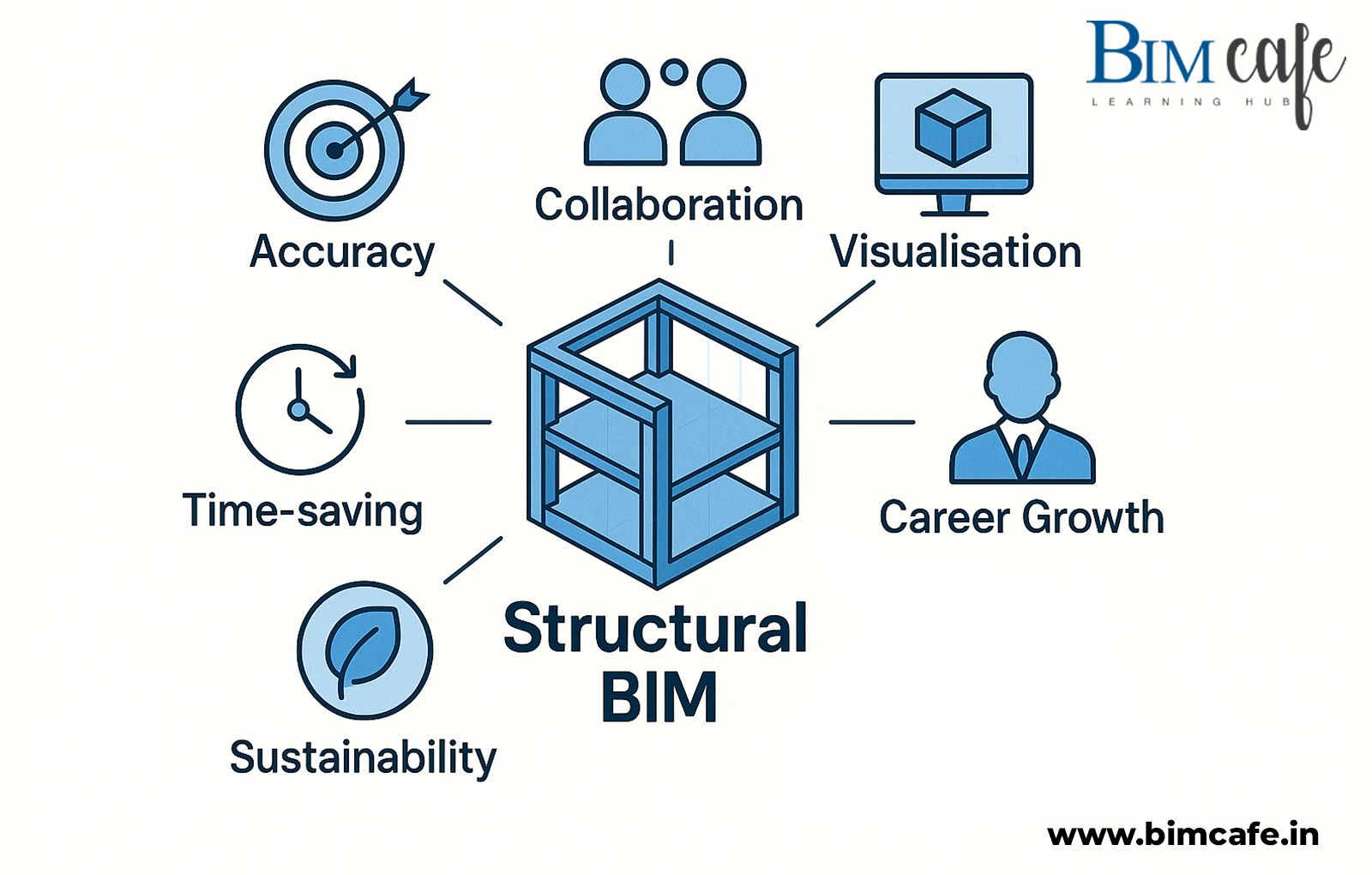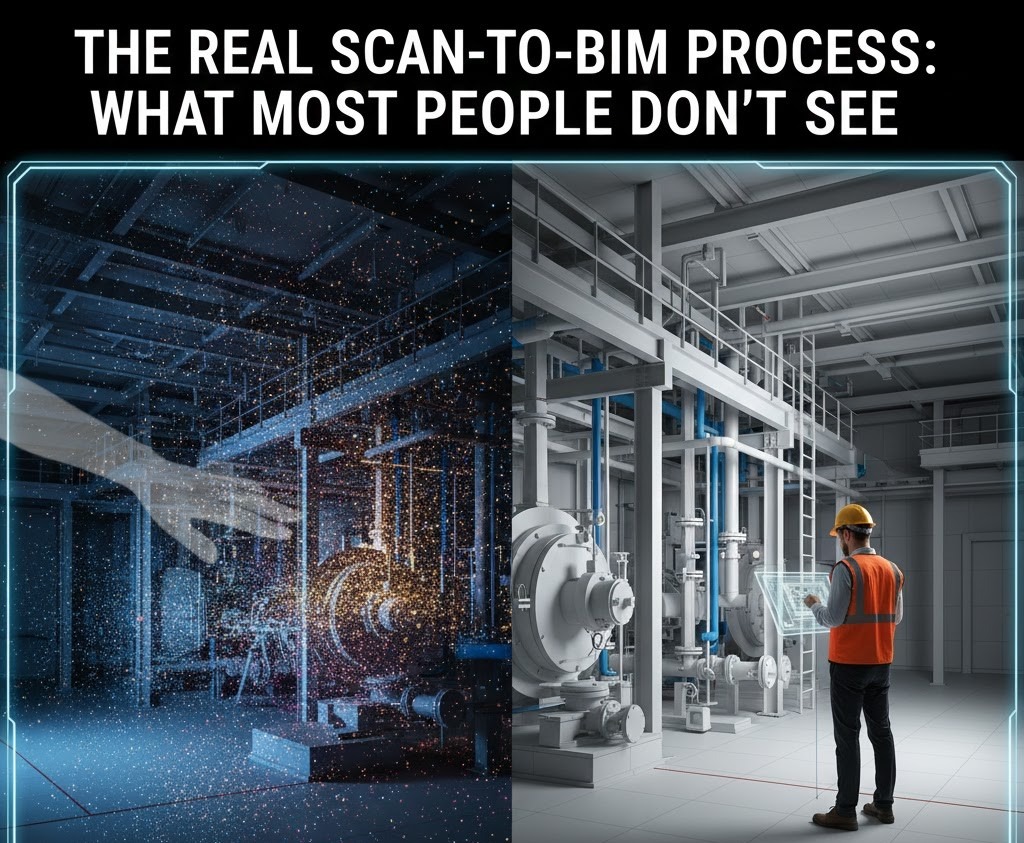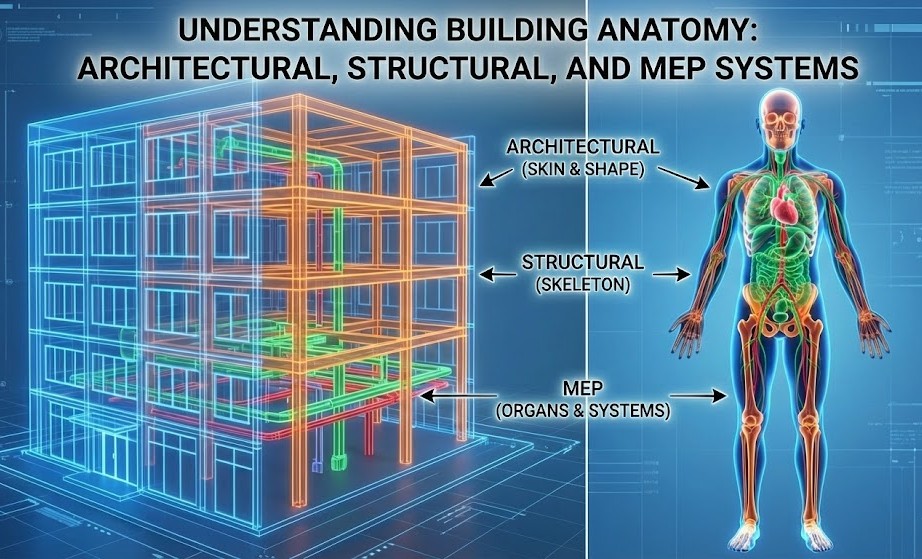
Author: Devika R
August 6, 2025
7 min read
The civil engineering industry is undergoing a digital transformation, and at the heart of this evolution lies Structural BIM (Building Information Modeling). This intelligent process integrates the physical and functional characteristics of structures into digital models, enhancing precision, collaboration, and efficiency. For today’s civil engineers, Structural BIM isn’t just a technological tool; it’s a career-defining skill that aligns with the future demands of infrastructure development.
This blog explores why Structural BIM is becoming essential for civil engineering careers, how it is revolutionising the construction industry, and why students and professionals alike should embrace it.
What is Structural BIM?

Structural BIM refers to the application of BIM processes specifically in structural engineering. It involves creating a detailed digital model that represents the structural elements of a building, columns, beams, slabs, foundations, and reinforcements, along with crucial design and construction data.
Unlike traditional 2D drafting, Structural BIM is:
- 3D, data-driven
- Highly collaborative
- Efficient for all stakeholders
It allows engineers, architects, contractors, and clients to visualise, simulate, and coordinate the entire lifecycle of a structure, from conceptual design to construction and maintenance.
Benefits of Structural BIM for Civil Engineering Careers

1. Enhanced Design Accuracy and Efficiency
Traditional methods often involve manual drafting and repetitive rework, increasing the risk of human error. With Structural BIM, changes made in one part of the model are automatically reflected across all views and documentation.
This leads to:
- Greater design consistency
- Faster revisions
- Fewer design-related errors
BIM tools, such as Autodesk Revit and Tekla Structures, enable engineers to design complex structures with higher precision and reduced rework.
2. Improved Collaboration Across Disciplines
Modern construction requires strong coordination between structural, architectural, and MEP teams. Structural BIM promotes this through cloud-based collaboration platforms, enabling real-time updates and model sharing.
Key outcomes include:
- Early clash detection
- Reduced delays in communication
- Smoother handover between disciplines
This collaboration yields better project outcomes and improved cost control.
3. Better Visualization and Structural Analysis
Structural BIM offers powerful 3D visualisation capabilities, helping engineers and clients understand how each component will function and fit together.
It also integrates structural analysis tools such as:
- Finite Element Analysis (FEA)
- Load testing and material behaviour simulations
This makes it easier to evaluate and enhance structural performance before construction begins.
4. Streamlined Construction Planning and Execution
With 4D BIM integration (time), Structural BIM helps in visualising the entire construction timeline. Engineers can simulate construction stages and optimise:
- Material delivery
- Labour scheduling
- Site logistics
This reduces inefficiencies and ensures projects stay on schedule and budget.
5. Career Growth and Industry Demand
As BIM adoption grows globally, Structural BIM is quickly becoming a required skill. Countries like the UK, UAE, and India are mandating BIM in public infrastructure projects, increasing the demand for BIM-literate professionals.
Career paths include:
- Structural BIM Modeler
- BIM Coordinator
- Design Engineer
- BIM Consultant
- Project BIM Manager
Professionals with BIM expertise are more competitive and have access to international job opportunities.
6. Sustainability and Lifecycle Management
Structural BIM supports sustainable construction through:
- Material optimisation
- Waste reduction
- Lifecycle data integration (6D BIM)
Engineers can plan for long-term maintenance, renovation, and decommissioning using BIM data, aligning with environmental goals and green building standards.
Why Students and Professionals Must Learn Structural BIM

Bridging the Skills Gap
Most traditional civil engineering curricula don’t offer in-depth, hands-on BIM training. As a result, there is a growing gap between academic education and industry needs.
Civil engineering students and early-career professionals can bridge this gap through specialised Structural BIM courses that include:
- Real-world projects
- Structural design principles
- Revit, Tekla, and Navisworks training
- BIM workflow and standards
Final Thoughts
Structural BIM is redefining how the construction industry operates, and civil engineers must evolve with it. From improving design accuracy and sustainability to creating lucrative career opportunities, BIM is no longer a niche skill; it’s an industry standard. Whether you’re just starting your journey or aiming to upskill for global opportunities, mastering Structural BIM is a smart, future-ready move.
To take the next step, consider enrolling in the Structural Design Concepts and BIM course by BIM Cafe Learning Hub, a trusted platform for hands-on, project-focused BIM education tailored for aspiring structural engineers.
Start your Structural BIM journey today with BIM Cafe Learning Hub and gain the practical skills needed to thrive in the future of civil engineering.





